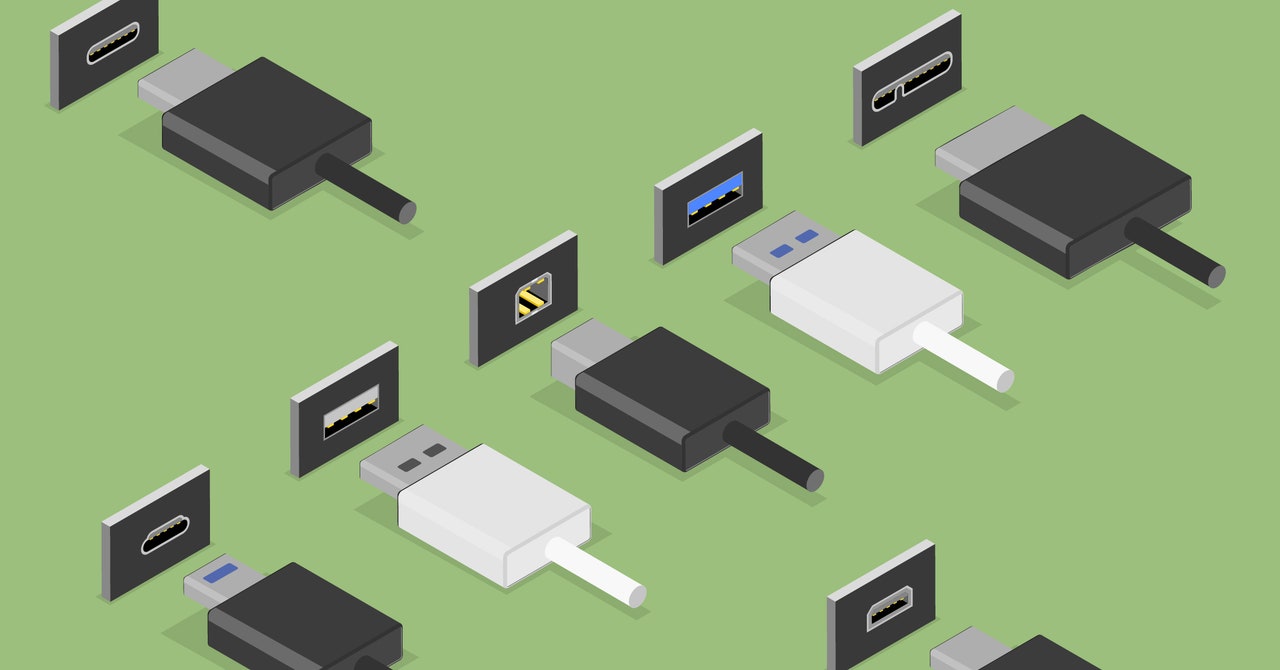
The very title, Common Serial Bus (or USB) is an bold promise: One port to rule all of them. The fact is sadly messier than that. Whereas your cellphone, pill, and laptop computer may all use the identical USB-C port for charging and transferring knowledge today, they will all work in another way.
What’s USB4? What’s Thunderbolt? Is it the identical as USB-C? I am right here to assist reply all of these questions, so you will get the most effective efficiency out of your gadgets.
Power up with unlimited access to WIRED. Get best-in-class reporting that is too vital to disregard for simply $2.50 $1 per 30 days for 1 yr. Consists of limitless digital entry and unique subscriber-only content material. Subscribe Today.
Glossary of USB Phrases
First, it is vital to outline just a few phrases upfront.
USB 2.X/USB 3.X/USB4
Each USB gadget is constructed to some model of the USB specification, managed by the USB Implementer’s Forum (USB-IF). These variations are primarily characterised by how a lot knowledge they will switch and the way a lot energy they will ship (at the very least, these are the principle issues you could care about). Whereas most of those gadgets are interoperable so long as they use the identical kind of port, your entire chain will conform to the slowest a part of the chain. Say you plug a USB 3.2 solid-state drive right into a USB 3.2 port in your pc, however use a USB 3.0 cable—knowledge will solely switch at USB 3.0 speeds. Be sure that each hyperlink in your chain is rated for the velocity you want.
USB Energy Supply (or USB-PD)
As an alternative of carrying a charger for each single gadget you personal, you may go for a charging adapter that may juice up a number of gadgets via several USB-C Power Delivery (USB-C PD) ports. Energy Supply is a fast-charging methodology that helps as much as 240 watts of energy and permits devices to securely speak to chargers to type out the proper energy wants. You may discover these sorts of ports on USB hubs as well, generally known as “pass-through charging,” although it is not an official time period.
Be sure that the wattage of a USB-C port on a charging adapter or hub can deal with what your gadget wants. A MacBook Professional sometimes wants 96 watts throughout intense workloads (although you possibly can nonetheless cost them at decrease wattage), so that you’d most likely want a 100-watt USB-C port on the charging adapter or USB hub for the most effective charging expertise.
USB-C and USB-A
These phrases seek advice from the bodily form of the connectors and ports on gadgets. USB-C is widespread and appears like a small, elongated oval. It is also reversible, so you possibly can’t plug it within the flawed method. USB-A is the older, rectangular port you have seen for years. There are a lot more types of USB connectors, however these are the 2 you are most definitely to see in charging adapters, hubs, and docking stations immediately.
SuperSpeed
You may additionally see some USB gadgets marketed with phrases like “SuperSpeed,” “SuperSpeedPlus,” and “SuperSpeed USB 5/10/20 Gbps.” These phrases had been initially meant to be more helpful, marketable labels to indicate what technology or velocity a USB port was, however sadly, it solely made issues extra complicated. Usually, you possibly can ignore these labels and have a look at the precise velocity rankings.
What Is Happening With USB Generations?
It might be good in the event you might plug a USB 3.2 gadget right into a USB 3.2 port utilizing a USB 3.2 cable and belief that all of it works. Sadly, it is far more sophisticated than that.
When USB 3.0 got here out in 2008 it had a max velocity of round 5 gigabits per second (Gbps). Nevertheless, when USB 3.1 got here out in 2013 with a max velocity of 10 Gbps, the 5-Gbps model was renamed to USB 3.1 Gen 1, whereas the brand new, sooner spec was USB 3.1 Gen 2. Confused but? Nicely, it will get worse.
After USB 3.2 got here out in 2019, the 5-Gbps USB was rebranded once more to “USB 3.2 Gen 1,” the 10-Gbps model turned “USB 3.2 Gen 2,” and the brand new 20-Gbps specification turned—you guessed it—USB 3.2 Gen 2×2. Wait, what? The “2×2” refers to operating two 10 Gbps lanes of knowledge concurrently. You need not know all of this. Many USB hub and docking station manufacturers have given up on names, labels, and symbols. They’ve began printing the utmost velocity subsequent to ports straight.






